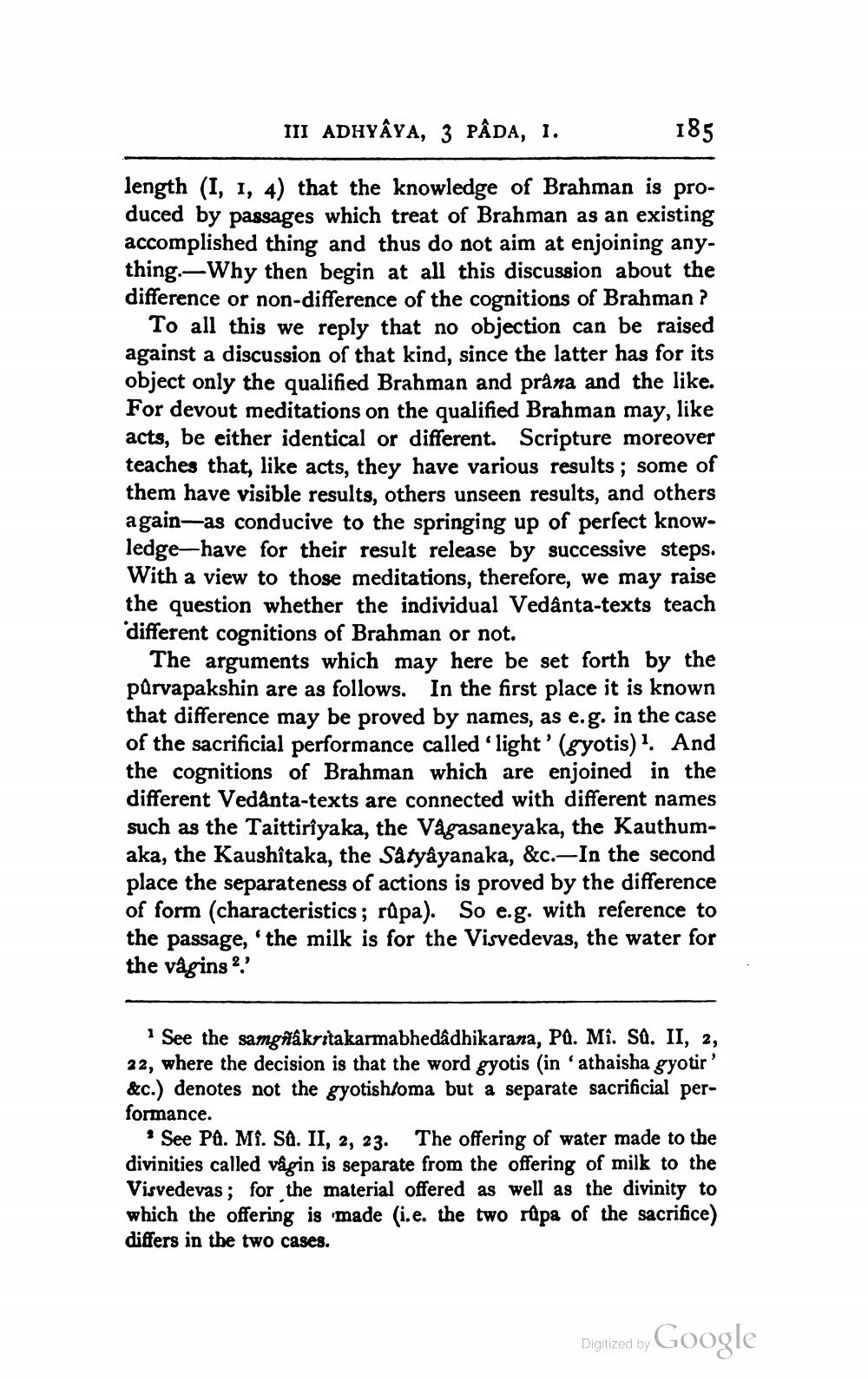________________
III ADHYAYA, 3 PÂDA, 1.
185
length (I, 1, 4) that the knowledge of Brahman is produced by passages which treat of Brahman as an existing accomplished thing and thus do not aim at enjoining anything.–Why then begin at all this discussion about the difference or non-difference of the cognitions of Brahman?
To all this we reply that no objection can be raised against a discussion of that kind, since the latter has for its object only the qualified Brahman and prana and the like. For devout meditations on the qualified Brahman may, like acts, be either identical or different. Scripture moreover teaches that, like acts, they have various results, some of them have visible results, others unseen results, and others again—as conducive to the springing up of perfect knowledge-have for their result release by successive steps. With a view to those meditations, therefore, we may raise the question whether the individual Vedanta-texts teach different cognitions of Brahman or not.
The arguments which may here be set forth by the purvapakshin are as follows. In the first place it is known that difference may be proved by names, as e.g. in the case of the sacrificial performance called 'light' (gyotis). And the cognitions of Brahman which are enjoined in the different Vedanta-texts are connected with different names such as the Taittirîyaka, the Vågasaneyaka, the Kauthumaka, the Kaushîtaka, the Satyâyanaka, &c.-In the second place the separateness of actions is proved by the difference of form (characteristics; rupa). So e.g with reference to the passage, the milk is for the Visvedevas, the water for the vagins?'
* See the samgrâkritakarmabhedâdhikarana, Pa. Mî. Sa. II, 2, 22, where the decision is that the word gyotis (in 'athaisha gyotir' &c.) denotes not the gyotishloma but a separate sacrificial performance.
See Pg. Mi. Sa. II, 2, 23. The offering of water made to the divinities called vagin is separate from the offering of milk to the Visvedevas; for the material offered as well as the divinity to which the offering is made (i.e. the two rûpa of the sacrifice) differs in the two cases.
Digitized by Google




